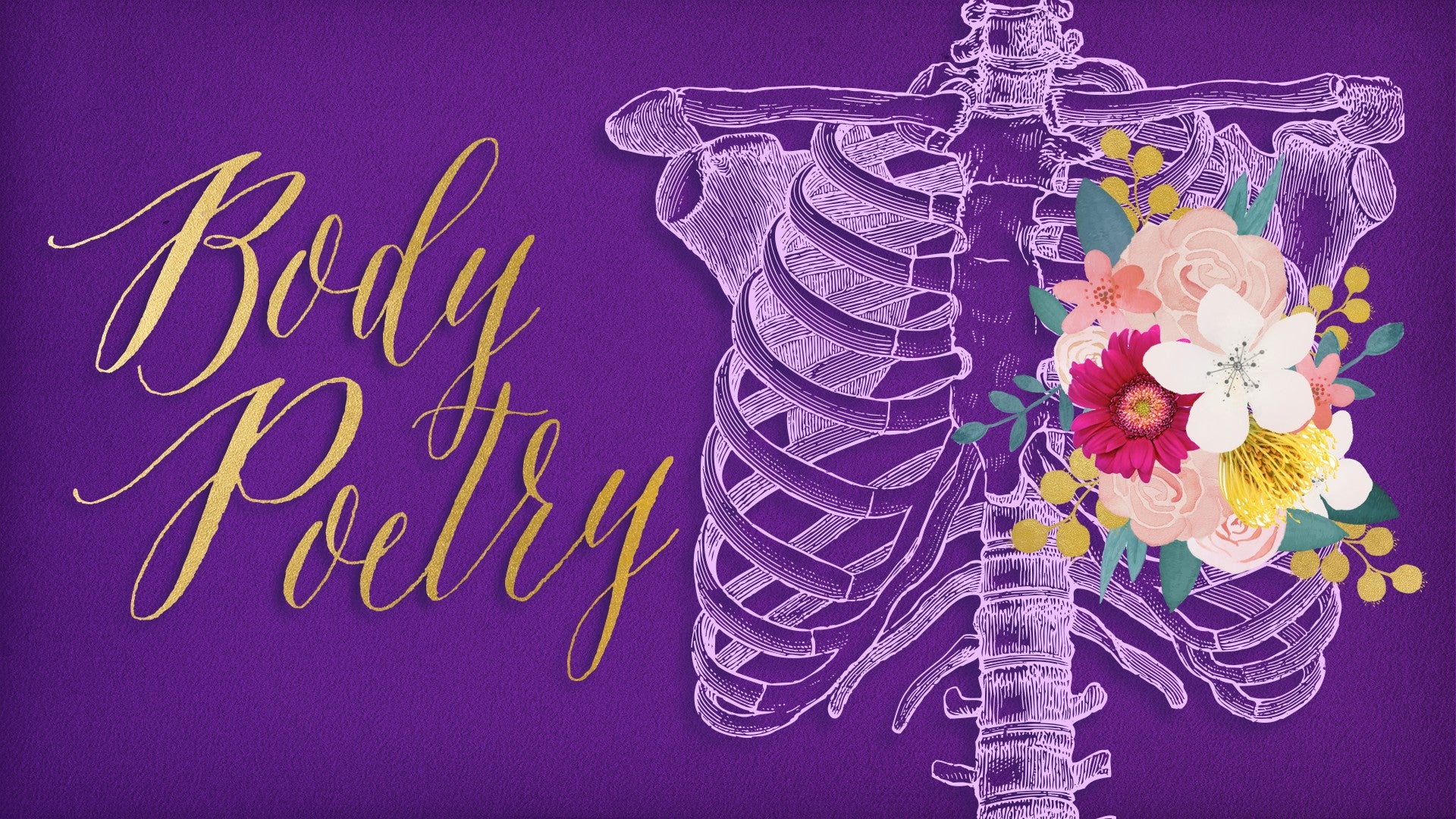Description
About This Video
Transcript
Read Full Transcript
The wise yogis of the past began to experience that when they were in different energetic or emotional states, it would have an effect on their own breathing, it would have an effect on their own posture. And through their wisdom they began to wonder, maybe we can reverse engineer these processes and create these technologies to bring about different energetic or emotional states. And so as yogis we begin to work with the breath as a way to help bring in these concepts of engagement and surrender or expansiveness and softening, things like presence and permeability. And through working with the breath I think we develop a connection, a poetry to begin to move into these other energetic realms. We can derive a lot of inspiration, which is frankly the fancier word for inhale, we can derive a lot of inspiration from the anatomy and physiology of our breathing mechanism.
So I used to very much think that we kind of sniff the breath in and push the breath out, but I dare say it's much more yogic and much more beautiful than that. In fact, we have this diaphragm, which is this kind of a dome-shaped muscle, some people say it looks like an open umbrella or a portobello mushroom, but it's this muscle that's kind of tucked up underneath the last six ribs on either side. And when it contracts, it draws down, it flattens towards the earth or towards your feet. And connected to that diaphragm are these encasings of the heart and the lungs, part of our fascial system. And by pulling down on this muscle when it contracts, it pulls on the lungs and it pulls on the heart, kind of giving them a little hug, and it creates a negative pressure in the chest.
And air always likes to fill the area of lowest pressure, so air will be funneled in through the nose or the mouth or whatever's open. So it's not that we're sniffing it in and pushing it out, but much more beautifully, we are literally creating space for the inspiration to fill us. We're not pulling inspiration come, right? We're creating space, we're liberating space for the inspiration to just fill us. And this is the active phase, this is the engagement phase of the breath.
The exhale phase, the diaphragm domes back in and up towards the heavens, towards the crown, and it is the relaxation phase of that muscle. It's at its deepest surrender, it's at its deepest release, and it's at that deepest release that we are actually physically and physiologically the strongest, which again is deep. It's not when we're the most engaged, the biggest, the most puffed up, but it's when we're the softest, the most relaxed, the most surrendered, where we are physiologically the strongest. And just like this thoracic diaphragm, which is the prime mover of this respiration, we have these accessory muscles, these accessory diaphragms, kind of like your pearls and hat of the operation. And the accessory muscles help to facilitate the movement of the breath.
If you think of like a wave pool and someone just standing at one end rippling the water, it has an effect on the other side of the pool. And these other muscles, these other groupings of diaphragms help to facilitate that movement of breath through the body. At the very base of our body we have what's called, what I call the pelvic diaphragm or the pelvic floor. And it's very similar to the thoracic diaphragm, but instead of having just one muscle, it's actually a series, kind of a multi-layered series of slings or hammocks, three sets of hammocks that move from the pubic bone, the tailbone, and the two sitting bones forming our base. And they act in coordination with the thoracic diaphragm.
So as you inhale, those muscles begin to soften and expand down towards the earth. And on the exhale they dome back in and up towards the crown. And so that's why as you breathe in, you might start to notice your belly inflating. Obviously there's no lung tissue in the belly, but this descending down of the thoracic diaphragm and this making room in the abdomen kind of squishes the abdominal organs and the pelvic floor provides just a little hammock for them to expand on the inhalation and the abdominal organs get a little hug every time you breathe. Just like the pelvic floor and the thoracic diaphragm, we can experience that we have a diaphragm, I call it the brain diaphragm, underneath the brain.
And unlike the thoracic diaphragm and the pelvic floor diaphragm, it's not muscle, so it doesn't have a contraction stage and a relaxation stage, but it's rather a type of fascia called visceral fascia and it's like this saran wrap around the brain and it has two big pieces, a piece that runs almost like a mohawk in between the two hemispheres of the brain. It's called the falc cerebri. And then there's a little tent over the back part of the brain called the tentorium cerebelli. And this series of fascia also forms this diaphragm and also has acknowledged movement with the breath, albeit extremely subtle. It has acknowledged movement with your own phase of inspiration and expiration or inhale and exhale.
So as you inhale, it draws down towards the earth, making the brain a little bit kind of short and squat. And on the exhale, it domes back in and up towards the crown, making the brain a little bit more tall and narrow. And this also helps to form this wave-like movement that helps facilitate the movement of these fluids that surround the brain and surround the spinal cord called the cerebral spinal fluid. So you have this wave of breath that not just touches your lungs, but really globally moves the fluids of the body. So breathing can become a full body experience and not just kind of limited to the circumference of your ribs.
You might start to notice that the positioning of these three diaphragms also might relate to something that you've experienced in your practice called bandhas or grantis. And so the bandhas are also, they have reference to these three diaphragms. And the grantis, the grantis are called, sometimes they translate as psychic knots, K-N-O-T-S, knots. So the psychic knots, these are knots that are not negative or positive, but they're ties that hold the consciousness in your form. So without these knots, so to speak, you would just be this undifferentiated awareness.
So we have these knots that begin to develop as we develop to hold or lock the consciousness in the body. And at the base, maybe in reference to the pelvic diaphragm, we find brahma granti. And brahma granti at the base holds our consciousness down in this area where our base needs are met. And this is positive as we develop as young babies, we need to develop a sense of safety and security. This is my mom, she gives me milk, I like her, I'll keep her around.
This is important to develop these bonds and safety, security, have your base needs met. But I'm sure we've all experienced times where this not almost becomes double tied or triple tied or super glued. And we start thinking we need more and more and more to feel safe and secure. And only if I had that raised and I'm secure, only if I had that cuter meet and I'm okay, you know. And so sometimes this knot can get a little bit too binding.
The practices of mula bandha or some of the works that we'll do in later episodes will help to pierce the granti, to help free the stuck energy, to help liberate some space and free the movement. In relationship to the thoracic diaphragm, we find what's called Vishnu granti. And this is the granti that I call it the label maker. So as part of our development, our childhood development, we need to form labels. We need to, I like carrots. Give me more carrots.
Please don't give me any more peas. I don't want peas. Get them out of here. We need to have likes and dislikes. We need to start to develop what I am and differentiate that from our parents or our family. Labels are necessary. But again, I'm sure we've all experienced that that label maker gets put on overdrive.
So much so that we forget about the union. We forget that we are all one. We forget that the mind will insist on duality, but just to figure things out, but that really doesn't exist. So it becomes super glued shut and we start to separate. This is my way and it's the right way. That's your way and I'll have none of that. Right. So through the practices of Udayana Bandha or through the practices of sound or visualization or movement of the thoracic diaphragm, we can help liberate some space and free that knot that binds.
In reference to the brain diaphragm, we might feel some relationship to Rudra granti. In Rudra granti, it's all about surrender. So it's important to develop your intellect. It's important to develop your thoughts, to study these concepts, to hear people's opinions, to read these texts. But no one has ever thought their way into meditation or planned their way into enlightenment. So there's a certain amount of surrender to free and the consciousness and to return back to this absorption in this ocean of Brahman.
So the practices of perhaps Jalandara Bandha or the practices of working with the breath in this region or visualizations that we'll do in other episodes might help us find a sense of sweet surrender to free again the knots that bind. So I hope you join me in the next few episodes. Please let me know how it's going in the comments below and I wish you much success. Namaste.
Body Poetry
Comments
Meanwhile, many blessings to you and have a wonderful thanksgiving filled with good food, surrounded by those you hold near and dear 🙏🏻
You need to be a subscriber to post a comment.
Please Log In or Create an Account to start your free trial.
















